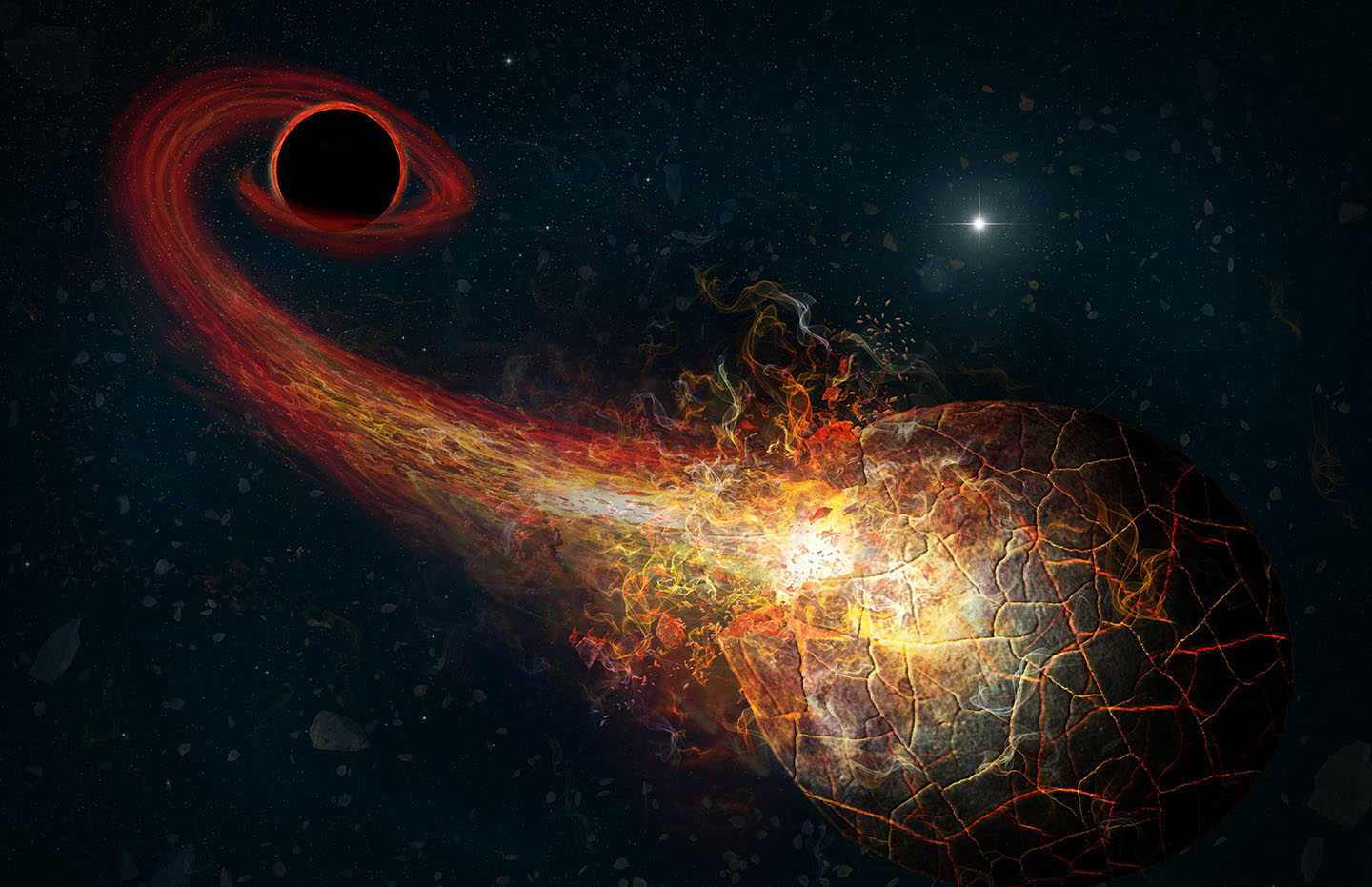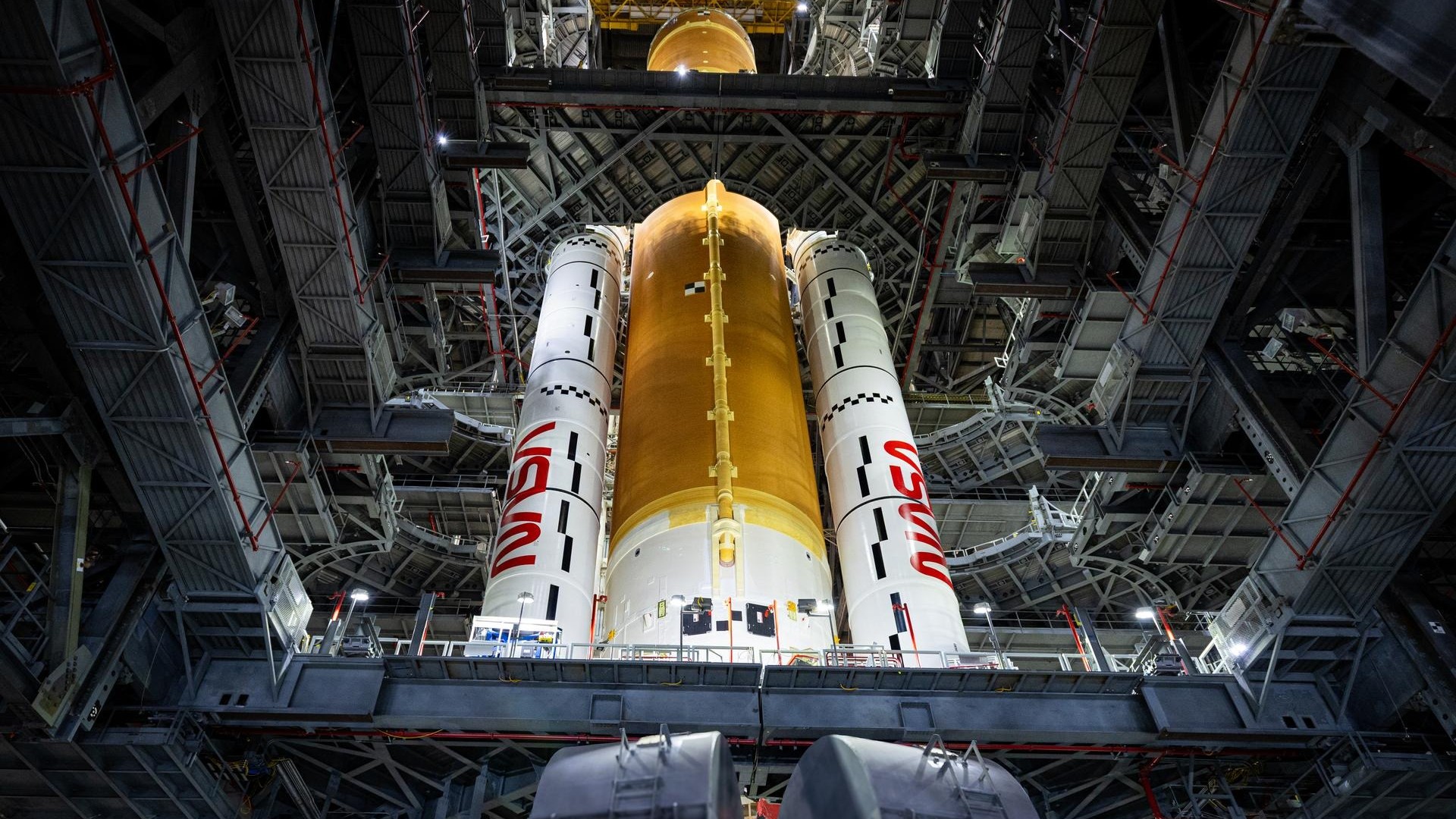Is 'Planet Nine' actually a grapefruit-sized black hole? Big new telescope could find out

A coming sky survey will help test a wild idea — that a grapefruit-sized black hole lurks undiscovered in the outer solar system.
Over the past few years, researchers have noticed an odd clustering in the orbits of multiple trans-Neptunian objects (TNOs), which dwell in the dark depths of the far outer solar system. Some scientists have hypothesized that the TNOs' paths have been sculpted by the gravitational pull of a big object way out there, something five to 10 times more massive than Earth (though others think the TNOs may just be tugging on each other).
This big "perturber," if it exists, may be a planet — the so-called "Planet Nine," or "Planet X" or "Planet Next" for those who will always regard Pluto as the ninth planet. But there's another possibility as well: The shepherding object may be a black hole, one that crams all that mass into a sphere the size of a grapefruit.
Related: The evidence for 'Planet Nine' in our solar system (gallery)
Astronomers are already scanning the heavens for any sign of Planet Nine, and they should soon be able to hunt for the putative black hole as well, a new study reports.
The highly anticipated Vera C. Rubin Observatory, a big telescope under construction in the Chilean Andes, is scheduled to begin a wide-ranging, decade-long survey of the southern sky called the Legacy Survey of Space and Time (LSST) in late 2022.
The Rubin Observatory will be incredibly sensitive and scan large swaths of sky repeatedly, a combination that will provide an unprecedented wealth of data, scientists have said. For example, LSST data will allow astronomers to probe the nature of mysterious dark energy and dark matter, find and track large numbers of potentially hazardous asteroids and study our Milky Way galaxy's formation and evolution, among other things.
Breaking space news, the latest updates on rocket launches, skywatching events and more!
The LSST observing program will also be able to spot a potential black-hole signature, the new study reports — "accretion flares" that result when black holes gobble up comets or other small objects.
"In the vicinity of a black hole, small bodies that approach it will melt as a result of heating from the background accretion of gas from the interstellar medium onto the black hole," study lead author Amir Siraj, an undergraduate astronomy student at Harvard University, said in a statement. "Once they melt, the small bodies are subject to tidal disruption by the black hole, followed by accretion from the tidally disrupted body onto the black hole."
Such accretion causes radiation emission, flashes that briefly shine light on dark and mysterious objects.
"Because black holes are intrinsically dark, the radiation that matter emits on its way to the mouth of the black hole is our only way to illuminate this dark environment," co-author Avi Loeb, the chair of Harvard's astronomy department, said in the same statement.
LSST data should be able to confirm or rule out the Planet-Nine-is-a-black-hole hypothesis within a year of the survey's commencement, according to the new study, which has been accepted for publication in The Astrophysical Journal Letters. (You can read a preprint of it for free at arXiv.org.)
And whatever LSST reveals will be of great interest to astronomers.
"The outskirts of the solar system is our backyard. Finding Planet Nine is like discovering a cousin living in the shed behind your home which you never knew about," Loeb said. "It immediately raises questions: Why is it there? How did it obtain its properties? Did it shape the solar system history? Are there more like it?"
Mike Wall is the author of "Out There" (Grand Central Publishing, 2018; illustrated by Karl Tate), a book about the search for alien life. Follow him on Twitter @michaeldwall. Follow us on Twitter @Spacedotcom or Facebook.

Michael Wall is a Senior Space Writer with Space.com and joined the team in 2010. He primarily covers exoplanets, spaceflight and military space, but has been known to dabble in the space art beat. His book about the search for alien life, "Out There," was published on Nov. 13, 2018. Before becoming a science writer, Michael worked as a herpetologist and wildlife biologist. He has a Ph.D. in evolutionary biology from the University of Sydney, Australia, a bachelor's degree from the University of Arizona, and a graduate certificate in science writing from the University of California, Santa Cruz. To find out what his latest project is, you can follow Michael on Twitter.
